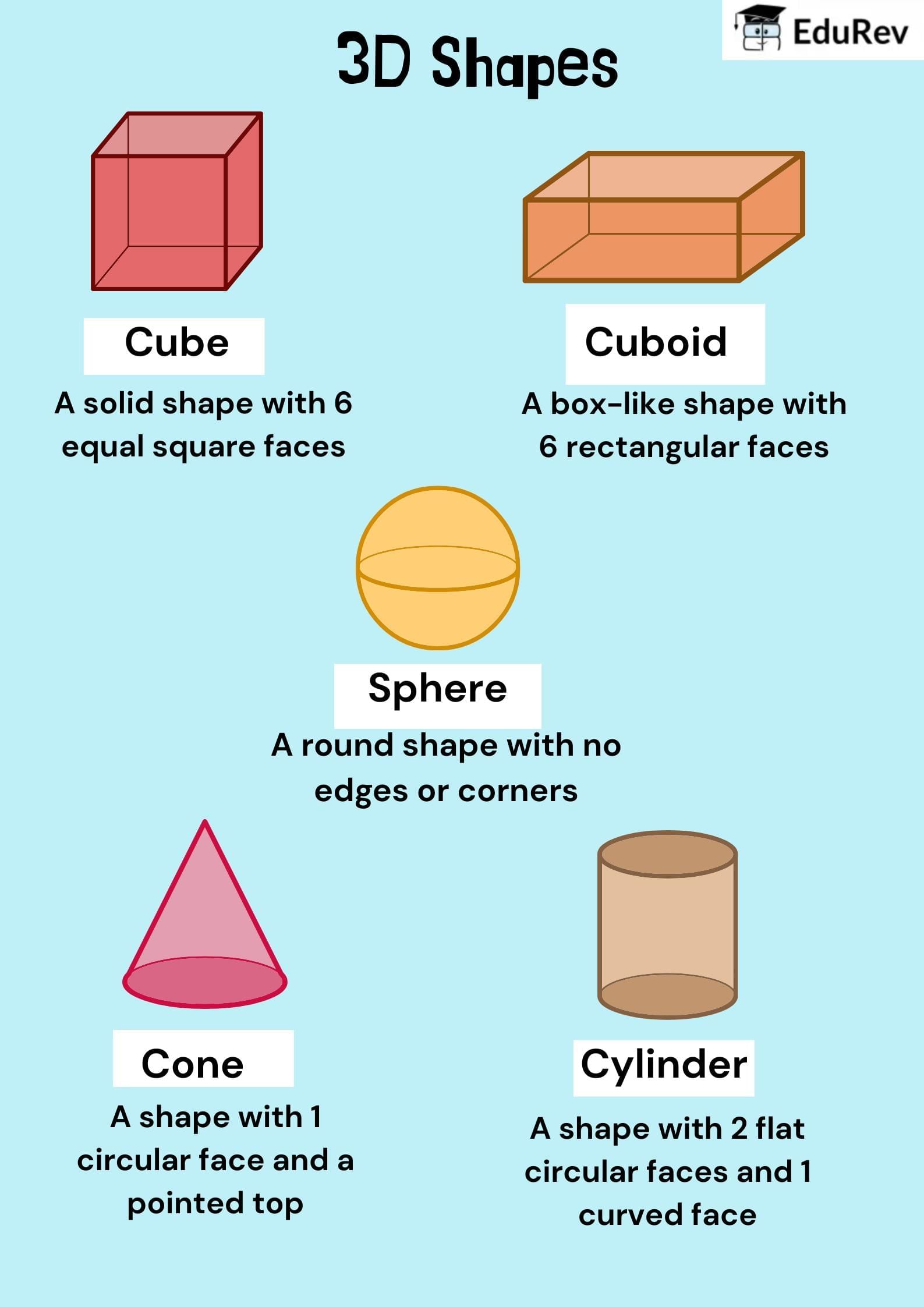Class 2 Exam > Class 2 Notes > Mathematics for Class 2 (Joyful-Mathematics) > Learning Poster: 3D Shapes
Learning Poster: 3D Shapes | Mathematics for Class 2 (Joyful-Mathematics) PDF Download

The document Learning Poster: 3D Shapes | Mathematics for Class 2 (Joyful-Mathematics) is a part of the Class 2 Course Mathematics for Class 2 (Joyful-Mathematics).
All you need of Class 2 at this link: Class 2
|
28 videos|262 docs|22 tests
|
FAQs on Learning Poster: 3D Shapes - Mathematics for Class 2 (Joyful-Mathematics)
| 1. What are the basic types of 3D shapes that students in Class 2 should know? |  |
Ans. Students in Class 2 should be familiar with several basic types of 3D shapes, including cubes, spheres, cylinders, cones, and pyramids. Each shape has distinct characteristics, such as the number of faces, edges, and vertices. For example, a cube has 6 square faces, while a sphere is round and has no edges or vertices.
| 2. How can I help my child understand the properties of 3D shapes better? |  |
Ans. To help your child understand the properties of 3D shapes, you can use real-life objects to illustrate these shapes. For instance, a basketball can represent a sphere, and a box can represent a cube. You can also encourage them to draw these shapes and identify their features, such as counting faces and edges, to reinforce their learning.
| 3. Why are 3D shapes important in daily life? |  |
Ans. 3D shapes are important in daily life because they help us understand and describe the world around us. For example, buildings are often made of cubes and rectangular prisms, while containers like bottles and cans are cylindrical. Recognizing these shapes helps with spatial awareness and is essential for various fields such as architecture, engineering, and design.
| 4. How can I make learning about 3D shapes fun for my child? |  |
Ans. Learning about 3D shapes can be made fun through interactive activities. You can create a scavenger hunt where your child finds objects around the house that match specific 3D shapes. Additionally, using building blocks or playdough to create different shapes encourages hands-on learning and creativity while reinforcing their understanding of geometry.
| 5. What are some common mistakes students make when learning about 3D shapes? |  |
Ans. Common mistakes students may make when learning about 3D shapes include confusing similar shapes, such as a cylinder and a cone, or miscounting the number of faces, edges, and vertices. Some students may also struggle with visualizing the shapes in three dimensions. Encouraging practice through drawing and using physical models can help address these issues.
Related Searches
















